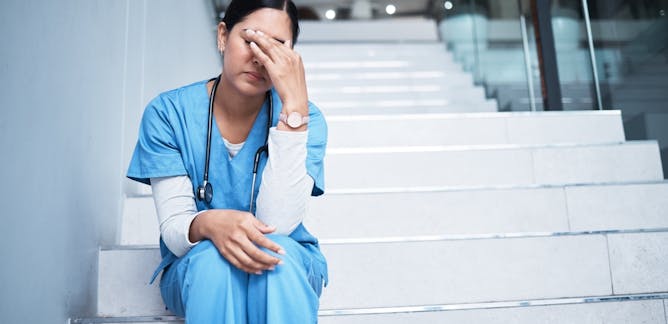
Artikel-artikel mengenai NSW
Menampilkan 1 - 20 dari 88 artikel

Overworking junior doctors has been normalised for decades. And we all suffer.

The NSW government wants GST to be allocated according to population. But doing so ignores different service delivery needs between states.

People love natural swimming spots, but it’s important to manage them well to protect both swimmers and the environment.

With the support of the Greens, there’s a chance the ‘Restoring Our Rivers’ Bill will pass. Will it be enough to put the Murray-Darling Basin Plan back on track?

Knowing the ‘next drought is just around the corner’, Australia’s Water Minister Tanya Plibersek is striking a new agreement to return water and health to the Murray-Darling Basin.

Projects have not been delivered. States are bickering. If the Albanese government is to uphold its election promise to deliver the Murray plan, hard tradeoffs are needed.

The action by the Environment Protection Authority follows alarming results from testing of rainwater tanks and the blood and hair of residents living near to the mine.

The NSW Crime Commission says cashless gambling cards are needed to stop billions of dollars of ‘dirty money’ being funnelled through NSW pokie venues,

A recent NSW Resolve poll gave Labor 43% of the primary vote, and the Coalition just 30%, though the major party leaders were tied for preferred premier.

Fixing the culture of individual casino operators is one thing. Fixing the political culture that allowed them to run amok is another.

The benefits of cannibalising Sydney’s rail network to introduce new driverless services is far from clear.

Paying good teachers more sounds like a great idea. The problem is the research on performance pay shows it’s counterproductive – and inflicting it on a system in crisis is terrible timing.

A just transition for coal mining communities has been talked about for decades. BHP’s decision this week shows it’s time to get serious.

Voluntary assisted dying is now legal, or will soon will be, in all six states. But we need enough doctors to put their hands up for training.

What are the key seats and issues affecting Australians? Six experts tell us what to expect in Queensland, Victoria, South Australia, Western Australia, Tasmania and New South Wales.

Multiple amendments could make the law unwieldy, incoherent and even unworkable.

A review of studies of Parramatta demonstrates an extensive deep-time archive of Indigenous activity extending over 14,000 years.

NSW and Victoria have taken different approaches on allowing unvaccinated people in places of worship, indicating the possibility for conflicting and confusing rules across the country.

Vaccines alone aren’t enough to protect against the highly contagious Delta variant.

The COVID-19 crisis in Wilcannia demonstrates how entrenched neglect has led to a community devastated by the global pandemic.
